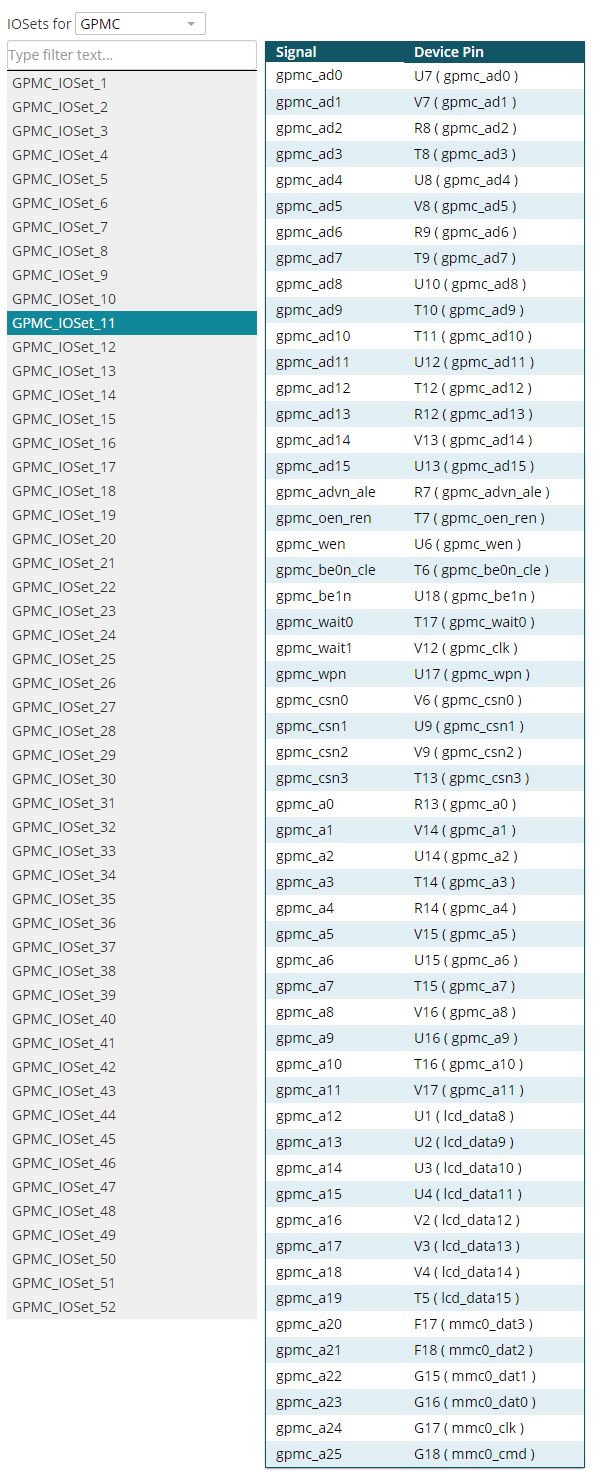Hi,
PINMUX doesn't let me use pin T17 for GPMC signal "Wait0" when I use MII1_PRUSS1, although I haven't used "COL signal" with this pin.
Is this bad working of PINMUX software or is that a restriction when using PRU?
Thank you so much.
Regards
This thread has been locked.
If you have a related question, please click the "Ask a related question" button in the top right corner. The newly created question will be automatically linked to this question.
Hi,
PINMUX doesn't let me use pin T17 for GPMC signal "Wait0" when I use MII1_PRUSS1, although I haven't used "COL signal" with this pin.
Is this bad working of PINMUX software or is that a restriction when using PRU?
Thank you so much.
Regards
Hi again,
The file I have sent to you is a working file, so every problem is in proccess to be solve, either changing pinout (that is the case of the GPIO peripheral) or adding external logic (that is the solution I have thought for having additional CS in GPMC peripheral). But the bigger problem is signal WAIT0, as we are not using this pin for MII1_PRU1, but Pinmux doesn't allow us to use it for GPMC. So the question is:
PINMUX doesn't let me use pin T17 for GPMC signal "Wait0" when I use MII1_PRUSS1, although I haven't used "COL signal" with this pin.
Is this bad working of PINMUX software or is that a restriction when using PRU?
We are assuming we don't need the signal COL, so this pin should be available for other peripherals. Is this true?
Hi roberto.perez,
Looks like you are using gpmc in ioset52, however the signal "Wait0" on T17 is now available in this ioset. Make sure you rearrange your configuration so that correct ioset is configured where "Wait0" on T17 is present. Does that make sense?
Also, I see a lot of "any" configuration in your design. That "any" available pin for a given signal configuration is very dynamic, meaning that the tool solves the configuration for you, so when you add/remove peripherals these "any" can get re-arranged. My advice is you should manually lock desired signal on a particular pad when your design matures enough.
thanks,
Alex
Hi roberto.perez,
The ioset view is just there for reference, unfortunately you cannot simply click to switch b/w iosets due to various reasons. So you must pick the ioset that fits your needs and configure the tool this way from the main view. Please go throught the iosets and choose the one that is good for you. For example (and I haven't done deep review) doesn't ioset11 fit your needs? How about configuring all your signals this way:
Thanks,
Alex
Hi roberto.perez,
I understand your dilemma, however using WAIT0 in ioset52 brakes the ioset rules, and those rules are there to guarantee the timing and switching characteristics from the Data Manual. So
roberto.perez said:Can we use WAIT0 for the NAND FLASH although it wasn’t available in IOSet52
I would say no. But let me ask around for additional comments from the HW teams.
Thanks,
Alex
Hi roberto.perez,
The PinMux Tool only allows pin combinations (IOSETs) that have been tested to pass timing requirements. Only pins within a single IOSET are guaranteed to fit the timing measurements from the datasheet. I'm sorry to say the pin combinations chosen are not valid from a timing perspective. You could manually edit the pinmux output to enable this pin but this is discouraged and will not be support if issues arise.
Regards,
Ahmad